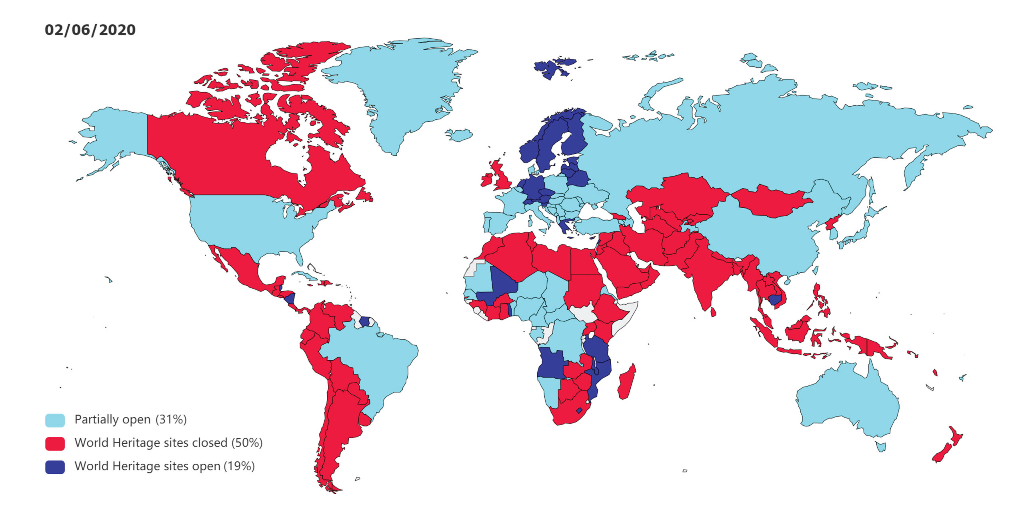![]() In the wake of the Covid-19 pandemic, many governments have taken measures to restrict movements of people and access to certain areas.
In the wake of the Covid-19 pandemic, many governments have taken measures to restrict movements of people and access to certain areas.
This includes the closure of natural and cultural World Heritage sites in the 167 countries they are located in. Please consider the following when reviewing the map:
The World Heritage Convention has been ratified by 193 States Parties but only 167 countries have properties on UNESCO’s World Heritage List;
The List includes a total of 1,121 natural, cultural and mixed World Heritage sites;
In some countries with federal systems there may be a different approach for certain areas within the country;
For some types of sites such as city centres, urban ensembles or agricultural landscapes access may be still possible to certain public areas of the sites, while other parts of the site may be closed, including site museums, visitor centres, religious or emblematic buildings;
For some countries, sites are being re-opened, such as in China;
While sites are closed, monitoring activities by site management may continue, especially for natural sites, including by anti-poaching units, monitoring by satellite images or drones and emergency interventions, for example in case of fires.
Analysis

The map displaying the 167 States Parties with World Heritage properties show that 84 (= 50%) countries have closed sites totally, whereas 32 (= 19%) countries kept their sites open. For 51 countries (31%) partial closure has been indicated, which includes countries that are re-opening World Heritage places slowly after the crisis.

